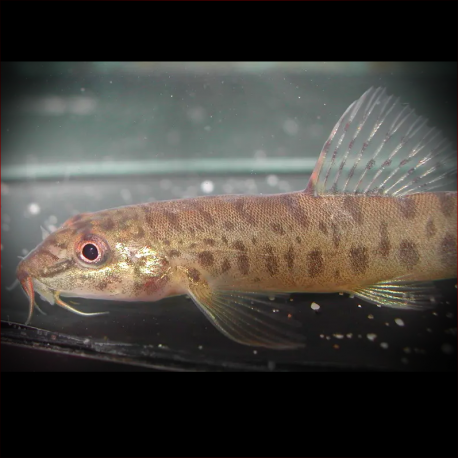More info
Datasheet
| Minimum Tank Size | 90 litres / 23.78 US gallons |
| Maximum Size | 7.5cm / 2.95inches |
| Temperature | 20°C / 68.00°F - 26°C / 78.80°F |
| Hardness | 1.01dgH / 18ppm - 12.05dgH / 215ppm |
| pH | 6.0-7.5 |
General Description
Acanthocobitis Sinuata is a species currently considered synonymous with Acanthocobitis Mooreh, showcasing differences in distribution and dorsal-fin ray count. Possessing reduced lateral lines, these fish have distinguishing characteristics including branched dorsal-fin rays, color patterns with ocelli on the caudal fin, and unique lip features. The family Nemacheilidae, to which they belong, is widely distributed across Eurasia, particularly in regions like the Indian subcontinent, Southeast Asia, and China.
Aquarium Setup
For optimal care in captivity, a tank designed to imitate a slow-moving stream or river section is recommended, with a sandy substrate, water-worn boulders, and driftwood for hiding. Soft-leaved plants like Microsorum and Anubias can be included, along with dried leaves for a natural touch. Bright lighting to promote aufwuchs growth will enhance the habitat. While a high water movement isn't crucial, maintaining a hill stream-style setup with rocky landscapes is also suitable.
Behaviour
These fish are generally non-aggressive and can coexist peacefully with various species in the aquarium hobby, especially native fish from their regions. They exhibit schooling behavior and are compatible with peaceful, similarly-sized cyprinids and loaches like Lepidocephalichthys and Nemacheilus spp.. However, more aggressive nemacheilids such as some Schistura spp. should be avoided as tankmates.
Feeding and Diet
Acantocobitis Sinuata are micropredators feeding on insect larvae in their natural habitat. In captivity, they accept sinking dried foods but thrive on a varied diet comprising small live and frozen foods like Daphnia, Artemia, and bloodworms to maintain optimal health.
Reproduction & Dimorphism
There is no recorded information on the reproduction of Acanthocobitis Sinuata. Adult males of this species are typically slimmer than females, showcasing sexual dimorphism.
Habitat and Distribution
Preferring streams and small rivers with substrates of sand, rocks, cobbles, and boulders, Acanthocobitis Sinuata is commonly found in habitats where leaf litter accumulates. Their distribution spans drainages in the Indian peninsula, predominantly below the Krishna watershed, including regions like the Wayanad district in Kerala, South India.

